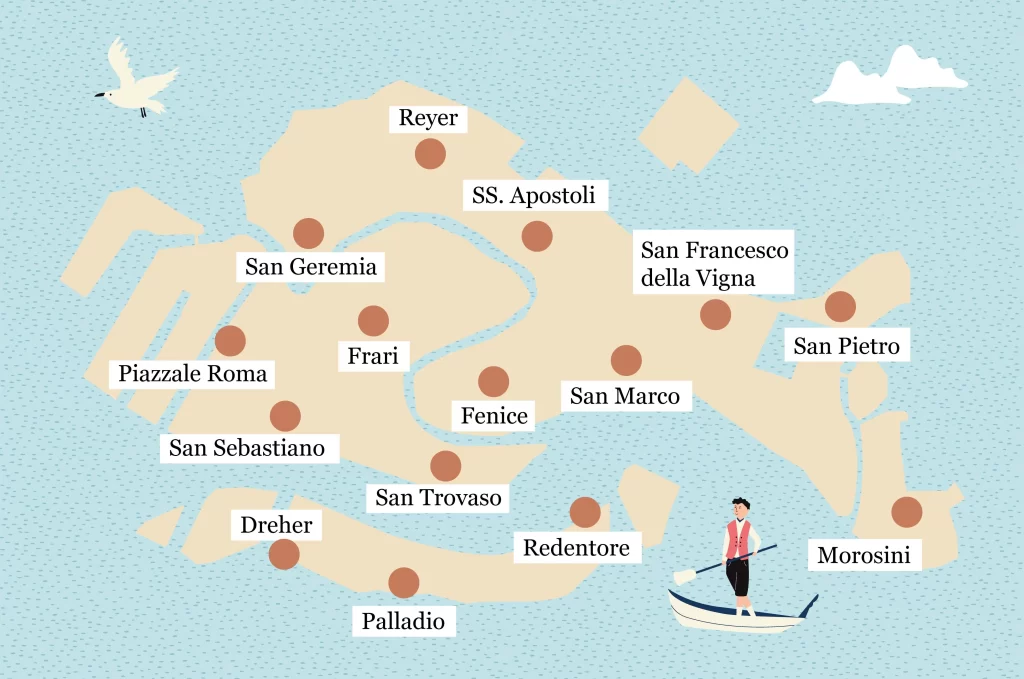How sound can enhance user experience and facilitate communication within the information architectures that guide us in physical and digital contexts.
Often, when talking about Information Architecture, people tend to imagine systems for organizing the contents of a digital interface. The scope of application is actually much broader, as it is about the logical and semantic organization of contents within any complex information space, both physical and digital.
Walking down the street, visiting a bookstore, listening to audio messages in train stations: without knowing it, we are surrounded by information architectures that someone has designed to guide us and accompany us in our daily experiences.
Information architecture also has a field of application related to sounds.
In an era in which human-machine interaction is increasingly sophisticated, understanding how sound can facilitate communication and improve the user experience is therefore fundamental.
Sound information architecture: key principles
Sound information architecture is based on some fundamental principles that guide the design and implementation of effective sound systems:
1 – Clarity: sounds must be easily recognizable and interpretable. Clarity is crucial to avoid confusion and ensure that the user immediately understands the message being conveyed.
2 – Consistency: using consistent sounds for similar actions helps create a stable mental map for the user, improving usability and navigation.
3 – Context: the sound must be appropriate to the context in which it is used. For example, a notification sound in a hospital environment must be discreet and not disturb patients.
4 – Feedback: sounds can provide immediate feedback to the user, confirming that an action has been completed successfully or signaling an error.
5 – Accessibility: sound can improve accessibility for users with visual impairments by providing an alternative means of receiving information.
Applications and use of sounds to enhance the user experience
Sound information architecture finds application in various sectors, including:
1 – User Interfaces (UI): sounds are used to enhance interaction with electronic devices, such as smartphones, computers and navigation systems.
2 – Cars: infotainment systems and audible notifications in cars improve safety and driving experience.
3 – Home automation: voice assistants and home automation systems use sound to interact with users and provide feedback.
4 – Games and Virtual Reality (VR): sound is essential to creating immersive environments and enhancing the gaming experience.
5 – Marketing and Advertising: sound is used to create brand identity and improve customer engagement.
6 – Citizen alarm systems: sounds to inform citizens of certain dangerous situations.
Designing sound information architectures: aspects to always take into account
When designing a user experience that is also driven by sounds, there are several aspects that should be taken into account:
- Sensory Overload: excessive use of sounds can lead to sensory overload, causing stress and fatigue in the user.
- Personalization: sound preferences vary greatly between individuals, making it difficult to create universal solutions.
- Environmental Interference: sounds can be easily masked by ambient noise, reducing the effectiveness of the sound information.
- Cultural Compatibility: sounds can have different meanings in different cultures, requiring careful consideration during design.
A concrete example: the sound alarm architecture for the acqua alta in Venice
When the sound content to be organized concerns, for example, alarm messages useful for warning citizens of possible risks, designing an ad hoc architectural system, peculiar to the specific needs of the people it is addressed to and suitable for the context for which it is intended, is fundamental.
Source: la Repubblica
An emblematic example of this type of sound architecture can be observed in Venice. The particular geographical configuration of the city, built on an archipelago of 118 small islands separated by canals and connected by bridges, on the one hand determines its uniqueness and beauty, on the other hand means that it is frequently threatened by acqua alta, a phenomenon that causes the water level in the canals to rise, risking flooding streets, houses, and damaging historical heritage.
Here, a new advanced siren system has been designed to warn residents and visitors of impending floods, demonstrating the effectiveness of sonic solutions within information architecture.
In fact, until recently, Venetian citizens were warned by a single siren, which indicated the acqua alta alarm. Thanks to the new siren system, Venice has revised its sound information architecture by providing for more sirens, strategically distributed across the territory and which are activated when forecasts indicate that the water level will exceed a certain critical threshold.

The design of the new sound information architecture of Venice: the key principles
The design of the new sirens and their distribution have been carefully studied to ensure that the signals are distinctive and easily recognisable, even in the midst of normal urban bustle and from any point in Venice.
In fact, the effectiveness of the new Venetian system is based on several key design principles of sound information architecture:
1 – Clarity: the sound of sirens is unique and easily distinguishable from other ambient sounds, allowing for quick identification and reaction.
2 – Reachability: regardless of the location of the recipients in the area, the sound must reach all inhabitants and visitors, ensuring that the warning message is universally received.
3 – Timeliness: the timing of siren activation is crucial: adequate advance warning allows people to prepare and react accordingly, minimizing potential damage and inconvenience.
4 – Adaptability: the system can be modified to communicate different levels of alertness through variations in sound, which can indicate the intensity of the event or its immediate imminence.
Specifically, the new system works so that the sounds describing the arrival of acqua alta are always preceded by the sound of the old siren and followed today by different sounds describing the expected tide level. The different tide levels are represented by 4 different sounds:
Initial warning siren
+110 cm: a prolonged sound on the same “note”
+120 cm: two sounds in ascending scale
+130 cm: three sounds in ascending scale
+140 cm and above: four sounds in ascending scale
This way, people will be able to count the number of different sounds to understand at what level the water should be expected to arrive and mobilize promptly accordingly.

Sound insights to create better experiences
The Venice siren warning system is not only a means of managing a crisis, but also represents an innovative application of audible information architecture.
In such contexts, where speed and clarity of information are vital, audible solutions can offer significant advantages over visual or textual ones, especially in emergency situations.
The lesson that Venice offers the world is not only about flood management, but also how information can be architected to be not only useful, but vital, where and when it matters most. As we move towards a future increasingly dominated by incessant data flows, audible information architecture emerges as an increasingly relevant discipline for ensuring the safety and well-being of urban populations, to be taken into account in the design of valuable experiences.